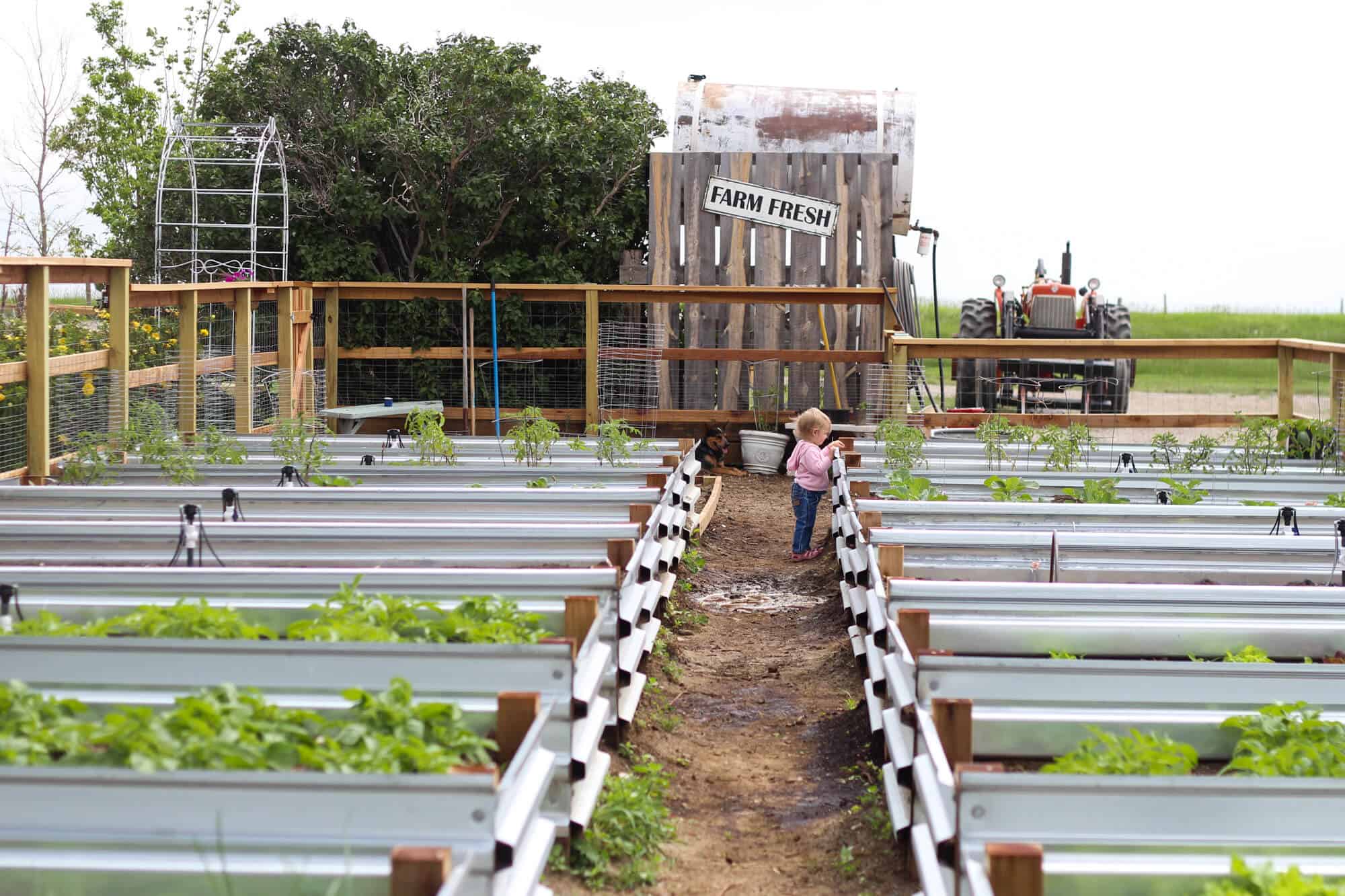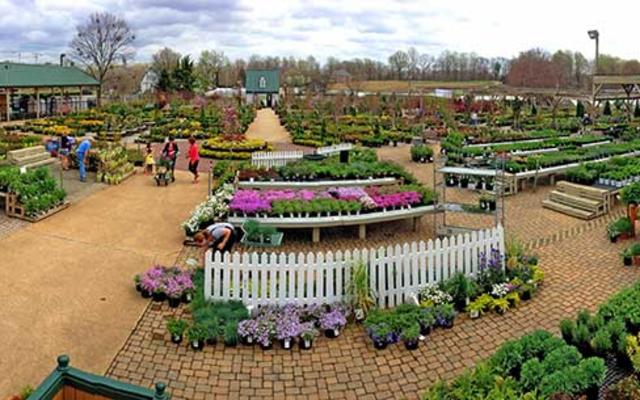Maximizing Yield in Homestead Gardening
Discover Necessary Tips for Effective Gardening Techniques and Practices
Gardening, commonly viewed as a simple pastime, includes a variety of strategies and techniques that can considerably influence the result of your initiatives. By focusing on essential elements such as soil health and wellness, efficient sprinkling methods, and ideal plant selection, gardeners can create a flourishing environment that sustains lively growth. Additionally, comprehending the subtleties of bug administration and seasonal upkeep can additionally improve efficiency. Several fanatics ignore essential information that can make or break their horticulture success-- discovering these ignored aspects might disclose the secret to growing a prospering garden.
Recognizing Soil Wellness
Soil health and wellness is a fundamental aspect of effective horticulture, as it straight affects plant development, nutrient availability, and environment balance. Healthy and balanced dirt is defined by a rich biodiversity of bacteria, raw material, and a well balanced pH level, which together produce an environment for plant development.
To recognize soil health and wellness, one should consider its physical, chemical, and organic homes. The appearance and framework of dirt affect its capacity to maintain wetness and nutrients, while the chemical composition figures out the accessibility of important components like phosphorus, potassium, and nitrogen. Routine dirt screening is critical to examine these elements, permitting gardeners to make enlightened decisions relating to plant foods and changes.
Moreover, advertising organic activity within the soil is vital for maintaining its health. Practices such as composting, crop turning, and using cover crops can enhance microbial diversity, enhance nutrient cycling, and lower soil erosion. By prioritizing soil health and wellness, gardeners not just optimize plant development yet also contribute to a lasting environment, making certain that their horticulture practices are resistant and ecologically accountable in time.
Efficient Watering Methods
Making certain that plants get the ideal quantity of water is vital for their health and development, especially when combined with a solid foundation of soil health and wellness (Homestead Gardening). Reliable watering strategies can substantially affect plant vigor, minimizing water wastage and promoting ideal advancement
One essential method is deep watering, which motivates origins to grow much deeper right into the dirt, enhancing drought resistance. This method commonly involves watering less often but in larger quantities, permitting moisture to penetrate the root zone thoroughly. Timing is additionally essential; morning is the ideal time to water, as it minimizes evaporation and allows vegetation to dry during the day, reducing illness risks.
In addition, using compost can help maintain dirt dampness and manage temperature, more assisting effective watering methods. Making use of a drip irrigation system can also provide targeted moisture directly to the roots, making certain that water gets to where it's most required while conserving resources.
Keeping track of rains and dirt dampness levels can direct modifications in your watering timetable, making certain plants receive consistent hydration without over-saturation. By embracing these efficient sprinkling methods, garden enthusiasts can cultivate a growing environment for their plants to prosper.
Plant Choice and Placement
Exactly how can the ideal plant option and critical positioning change a yard right into a prospering ecological community? The harmony in hop over to here between plant selections and their positioning is vital for developing a vivid yard. When choosing plants, think about aspects such as climate, soil type, and sunshine direct exposure. Indigenous types are typically the very best option as they are adapted to local problems and need less maintenance.
Strategic positioning includes arranging plants according to their development routines and needs. Taller plants should be positioned at the rear of borders to stop shading shorter plants. In addition, grouping plants with comparable water and light needs can enhance their development and minimize competition for sources.
Integrating a variety of plants not only includes visual appeal yet also advertises biodiversity, drawing in beneficial pests and pollinators. Think about the seasonal adjustments in your garden; pick a mix of perennials, evergreens, and annuals to make certain year-round rate of interest.
Last but not least, keep in mind to analyze the mature dimension of plants before planting to stay clear of overcrowding and make sure adequate air flow. Thoughtful plant option and tactical positioning develop a harmonious atmosphere, permitting your garden to grow while minimizing difficulties.
Bug and Disease Administration
Efficient parasite and disease administration is crucial for maintaining a healthy yard ecological community - Homestead Gardening. A proactive method, incorporating social, organic, and chemical techniques, can substantially lower the influence of pests and diseases on your plants

Biological controls, such as introducing advantageous bugs like ladybugs or aggressive mites, can keep insect populations in check without harming the environment. Additionally, maintaining plant wellness via correct watering, fertilizing, and trimming will boost their durability against diseases.
When intervention is necessary, go with targeted chemical therapies, making sure to comply with application guidelines to minimize harm to non-target microorganisms. Constantly prioritize sustainable techniques, as they advertise long-lasting garden wellness and eco-friendly balance. By integrating these strategies, garden enthusiasts can successfully manage pests and conditions, ensuring growing plants and an efficient garden.

Seasonal Maintenance Practices
In spring, emphasis on dirt preparation by screening pH levels and including needed changes. Frequently inspect arising plants for pests and illness.
As summer techniques, ensure appropriate irrigation while keeping an eye on for signs of anxiety or disease. Prune back disordered plants to encourage air flow and reduce humidity around vegetation. This technique not only improves plant wellness but likewise advertises flowering and fruiting.
With the arrival of autumn, it's time to get ready for winter. Tidy up dropped leaves and particles to stop insect problems, and consider planting cover go to this website crops to enhance dirt wellness. This season is likewise suitable for separating perennials and planting spring-flowering bulbs.
Final Thought
Effective gardening joints on the assimilation of audio practices in soil health and wellness, watering, plant choice, parasite monitoring, and seasonal maintenance. By prioritizing soil testing and microbial diversity, employing efficient watering methods, and picking ideal plants, garden enthusiasts can develop thriving ecosystems. Additionally, proactive insect administration and thorough seasonal upkeep linked here contribute considerably to general garden vitality. Embracing these techniques fosters a effective and lasting horticulture atmosphere, making sure growing growth and durability throughout the changing seasons.
By prioritizing vital elements such as dirt health and wellness, effective sprinkling methods, and suitable plant selection, garden enthusiasts can create a thriving ecological community that supports vibrant development. By focusing on soil health and wellness, gardeners not just enhance plant growth however also add to a sustainable environment, making certain that their gardening techniques are ecologically responsible and resistant over time.
Taller plants need to be positioned at the back of boundaries to avoid shielding shorter plants. Clean up dropped leaves and debris to stop pest invasions, and consider planting cover plants to enrich soil wellness.Successful gardening joints on the integration of sound techniques in soil health and wellness, watering, plant option, pest administration, and seasonal upkeep.